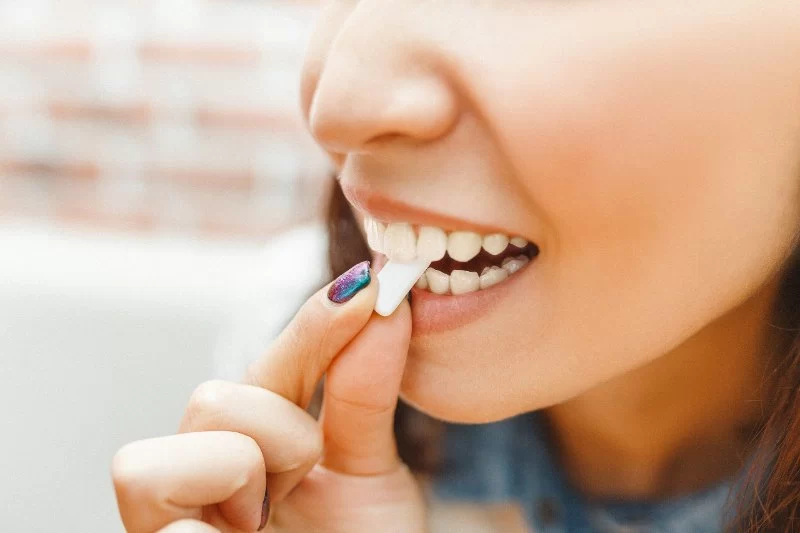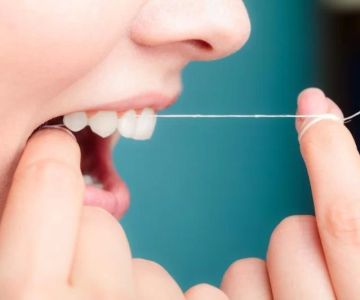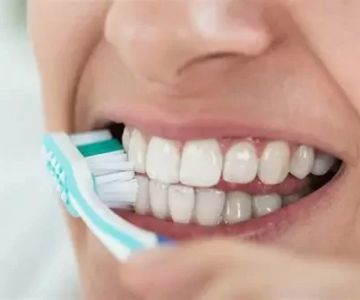
1. The Connection Between Chewing Gum and Oral Health
1.1. Why Chewing Gum is More Than Just a Habit
In the U.S., chewing gum has long been associated with fresh breath, boredom relief, and even stress reduction. But in recent years, the question has shifted: does chewing gum help oral hygiene? Surprisingly, dentists and researchers increasingly say yes—especially when it comes to sugar-free options.
The American Dental Association (ADA) has even approved certain sugar-free gums for their oral health benefits. It turns out that something as simple as chewing gum may help reduce plaque acids, increase saliva flow, and even prevent tooth decay. But there's more to the story than just popping a stick of gum after lunch.
1.2. The Role of Saliva in Oral Hygiene
Saliva plays a critical role in maintaining oral health. It helps neutralize acids produced by bacteria in plaque, washes away food particles, and carries essential minerals like calcium and phosphate that help strengthen enamel.
Chewing gum stimulates the production of saliva. According to Dr. Emily Richards, a practicing dentist in Austin, Texas, “Chewing sugar-free gum for 20 minutes after meals can significantly increase salivary flow, which helps rinse away harmful acids and maintain a neutral pH level in the mouth.”
2. Sugar-Free vs. Sugary Gum: A Crucial Distinction
2.1. Why Sugar-Free Gum Matters
Not all gums are created equal. Sugar-containing gums can actually feed harmful bacteria, leading to more plaque and cavities. On the other hand, sugar-free gums—especially those sweetened with xylitol—have shown antibacterial properties that can combat cavity-causing organisms.
Xylitol, a natural sweetener, cannot be fermented by oral bacteria. As a result, chewing xylitol gum reduces the number of Streptococcus mutans, the primary bacteria responsible for cavities. Several studies published in the Journal of the American Dental Association highlight the long-term benefits of regular xylitol use in children and adults.
2.2. How to Choose the Right Gum
Look for gums labeled with the ADA Seal of Acceptance. Brands like Orbit, Trident, and Ice Breakers Ice Cubes often carry this seal. These gums are not only sugar-free but are backed by clinical studies demonstrating their benefits for oral health.
3. Real-Life Experience: A Gum Habit That Changed Everything
3.1. Jason’s Story: From Cavities to Confidence
Jason, a 34-year-old marketing executive from Chicago, used to dread dental visits. “I was constantly dealing with cavities, despite brushing twice a day,” he says. “My dentist recommended chewing sugar-free gum after meals, especially during the workday when I couldn’t brush.”
Within a year, Jason noticed a dramatic improvement. His last two dental check-ups were cavity-free. “It seemed too simple at first, but it really worked. Now I carry gum with me everywhere.”
Stories like Jason’s are becoming more common, showing that small habits—when practiced consistently—can lead to lasting oral health improvements.
4. Scientific Backing: What the Research Shows
4.1. Chewing Gum and Plaque Reduction
A study conducted by the University of Illinois at Chicago found that individuals who chewed sugar-free gum three times a day had significantly less plaque buildup than those who didn’t. Another clinical trial in Finland revealed that daily xylitol gum use lowered the occurrence of new cavities by up to 70%.
These results support the idea that chewing gum isn’t just a placebo—it’s a scientifically supported tool in daily oral care routines.
4.2. Gum as a Supplement, Not a Substitute
Experts stress that while chewing gum is helpful, it’s not a replacement for brushing and flossing. Dr. Richards warns, “Think of gum as a booster, not a primary defense. It’s great for times when brushing isn’t convenient, but it should never replace basic oral hygiene.”
Used wisely, however, it can fill important gaps—like after meals at work, during long commutes, or in situations where water and toothpaste aren’t available.
5. Who Should Be Cautious with Gum
5.1. People with Jaw Issues or Braces
While chewing gum is generally safe, certain individuals should consult their dentist before making it a habit. People with temporomandibular joint (TMJ) disorders may experience worsened jaw pain with excessive gum chewing. Similarly, those wearing braces should avoid gum unless their orthodontist gives the green light.
5.2. Children and Older Adults
For children, sugar-free gum can be a fun way to reinforce oral hygiene habits—but supervision is key. Some gums pose choking risks for younger kids. Older adults who experience dry mouth (xerostomia) may benefit from chewing gum as a therapeutic solution. Many sugar-free gums are formulated specifically to target dry mouth symptoms.
6. The Final Word on Gum and Dental Health
6.1. Making Gum a Part of Your Oral Hygiene Routine
If you’re considering adding gum to your oral care routine, look for products with the ADA Seal, choose xylitol-based options, and keep it sugar-free. Aim to chew for about 20 minutes after meals to maximize the saliva-stimulating effects.
At Dentistry Toothtruth, we guide patients toward smarter dental choices every day. Whether it’s gum, toothbrushes, or personalized hygiene plans, we’re here to help you protect your smile with evidence-backed recommendations.







 Fine Dental Care4.0 (373 review)
Fine Dental Care4.0 (373 review) Perry Street Dental5.0 (200 review)
Perry Street Dental5.0 (200 review) Westridge Dental Group: Kasper Robert DDS4.0 (11 review)
Westridge Dental Group: Kasper Robert DDS4.0 (11 review) River Run Dental4.0 (1958 review)
River Run Dental4.0 (1958 review) Norton Family Dental4.0 (747 review)
Norton Family Dental4.0 (747 review) Dr. Michael P. Rutz, DMD5.0 (22 review)
Dr. Michael P. Rutz, DMD5.0 (22 review) The Importance of Oral Health Education During Pregnancy for a Healthy Pregnancy
The Importance of Oral Health Education During Pregnancy for a Healthy Pregnancy Best Tips for Brushing Your Teeth Properly for Healthy Gums: Essential Techniques for Oral Health
Best Tips for Brushing Your Teeth Properly for Healthy Gums: Essential Techniques for Oral Health Why Skipping Dental Checkups Can Lead to Bigger Oral Health Problems
Why Skipping Dental Checkups Can Lead to Bigger Oral Health Problems Advantages of Porcelain Dental Restorations
Advantages of Porcelain Dental Restorations How Can Diabetes Cause Tooth and Gum Problems? Preventing and Managing Oral Health Issues
How Can Diabetes Cause Tooth and Gum Problems? Preventing and Managing Oral Health Issues Healthy Habits for Promoting Good Oral Health and Hygiene: Tips for a Healthy Smile
Healthy Habits for Promoting Good Oral Health and Hygiene: Tips for a Healthy Smile